
Back to Loco of the Month homepage
Back to Sidestreet Bannerworks
.
January 2007
Miniature Steam Railways' 0-4-0
by Marc Horovitz

The company
Miniature Steam Railways (MSR) is a little-know American manufacturer. It existed in the 1980s and early 1990s under the leadership if Jim Wilson of Dallas, Texas. Jim was both a steam fan and a toy-train enthusiast. He was, I feel. something of a genius at taking existing parts from different companies, and combining them into entirely new products.
While I knew Jim, I didn't know him well, and so do not have a lot of background information. I met him a few times when he visited Denver. One of his early products (though not produced commercially) was a live-steam Stirling-style 2-2-2 in N scale (1:160), inspired by the micro-miniature work of Australian, Arthur Sherwood, with whom he corresponded. This he brought to my studio one day in 1983. Jim had scratchbuilt an entire train set, including the locomotive and tender, three freight cars, and a loop track that he had made, all packaged in a beautiful presentation box. He set up the track on one of my work tables. The boiler was 3/8" in diameter by 1-3/4" long. The tender served as both the alcohol tank and the burner. A wick tube extended forward from the front wall of the tender into the cab of the engine, putting the fire in the general proximity of the backhead.
Once the fire was lit, steam came up in about a minute. After giving it a nudge, the train ran smoothly for an astonishing 20 minutes or so, powered by one single-acting oscillator. The spring for the oscillator came from a lock tumbler, to give you an idea of its size. Jim had considered producing these sets for sale but, as far as I know, never did. I wonder where the original is today.
Jim had a friend, Terry Shirley, who I believe was also involved in Miniature Steam Railways. I tried to contact him before this review, but couldn't find him.
The train
Anyway, Jim was interested in producing an American-style steam railway system similar to that of Mamod’s in Britain. The commercial product that finally bore the name "Miniature Steam Railways" was an amalgam of ideas and parts. Technologically, it was a Mamod locomotive, using a Mamod boiler, smokebox, backhead, and other parts. The cylinders were made in the USA by Jensen. The safety valve appears to be Wilesco, as does the whistle. The sheet-metal work is original. I don't know who made the drivers. The pilot, I believe, is a toy-train reproduction part.
In addition to the locomotive, MSR came out with some rolling stock. The pieces I have on hand include tank cars in two different liveries, and a charming, manually operated crane and boom car. These, I believe, are mostly original, although some parts, including the very un-American buffers, were acquired from other steam-toy companies. MSR also produced at least three examples of a steam roller that used Wilesco cylinders mounted vertically on one side, Shay style. Jim was also developing a diesel-outline locomotive that was to run on a Stirling hot-air engine. I know that he had at least one working prototype.
Shortly after I received my train (I don't recall exactly when), I received a call from Terry Shirley telling me that Jim had died at the breakfast table of a massive heart attack one morning. He was only in his mid 50s. We have been deprived of an ingenious, creative, and industrious manufacturer. It would have been fascinating to see what he would have come up with had he been given the chance. (If anyone knows more about Jim Wilson, his history, or his products, I would like to hear from you. Please e-mail me at bannerworks@comcast.net.)
|
|
|
| Builder | Miniature Steam Railways (USA) |
| Date built | 1990 |
| Gauge | 1 (45 mm) |
| Scale | 16mm (nominal) |
| Boiler | Pot |
| Fittings | Safety valve, whistle |
| Fuel | Dry pellets |
| Blow-off pressure | 10 psi |
| Cylinders | Two, double-acting oscillators |
| Reversing gear | Rotary valve |
| Lubricator | None |
| Weight | 3 pounds, 4 ounces (loco and tender) |
| Dimensions | Length over all (loco and tender), 15-1/4"; width, 3-1/2"; height, 5" |
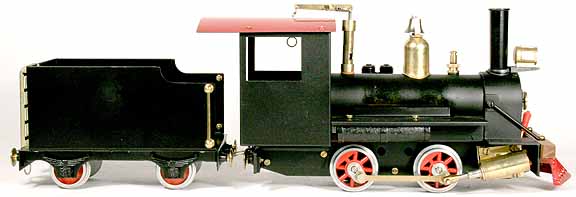
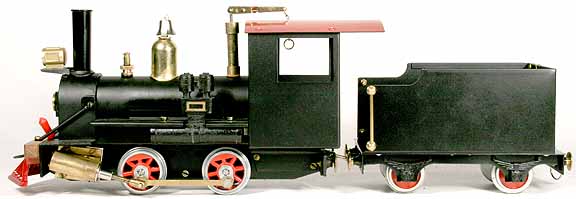
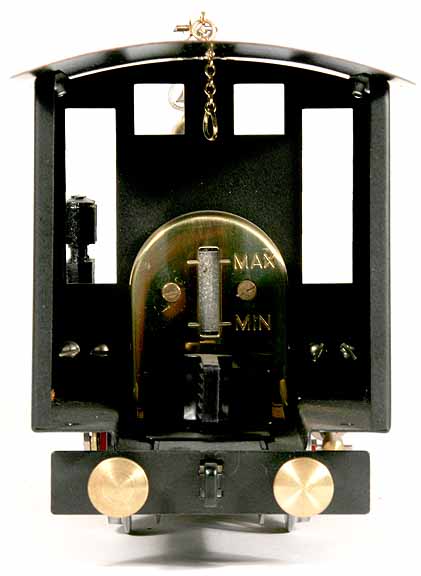
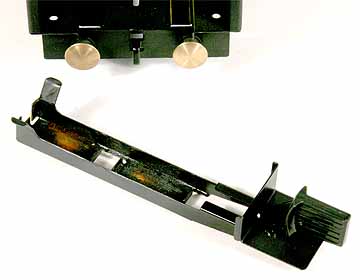

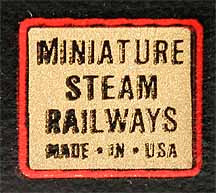



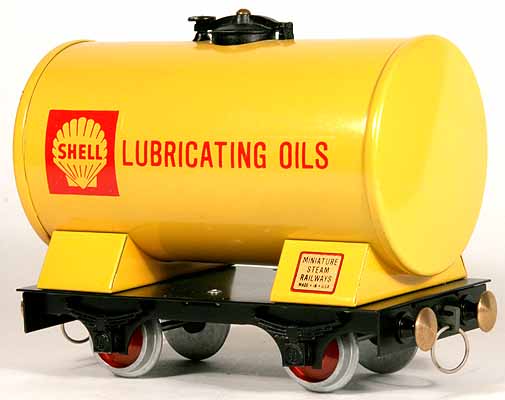
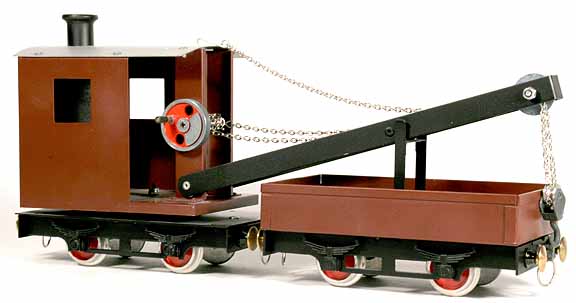


Back to Loco of the Month home page
Back to Sidestreet Bannerworks home page
This page and its contents
Copyright Sidestreet Bannerworks, 2006
.